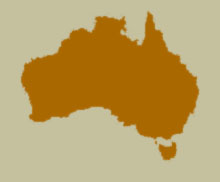Synonyms
Serangium sculptum Slipinski and Burckhardt, 2006: 46.
Diagnosis
The coarse lateral pronotal punctures combined with the dense and outwards directed pubescence are diagnostic for this species.
Description
Length 1.4-1.7 mm. Pitch black dorsally and ventrally; in male specimens head in front brown; antennae, mouthparts, tibiae and tarsi dirty yellowish. Winged; body shape hemispherical; pronotal margins visible from above; elytra with conspicuous swelling near humeral edge; pronotum finely rimmed anteriorly, laterally and posteriorly; elytral margins with narrow rim, visible from above in anterior half. Head, pronotal and elytral surface shiny; head sparsely punctate, covered in long sparse hairs. Pronotum densely covered in large punctures and associated outwards directed whitish hairs; interspaces less than diameter of punctures, sparser on disc. Scutellum elongate, triangular, flat, shiny, glabrous. Elytra impunctate or sparsely covered in very fine punctures, long setae present in basal quarter and along margin forming a row. Head with moderately large eyes, separated by 2.3 times eye width; flattened medially. Clypeus long, weakly curved anteriorly. Terminal maxillary palpomere narrow, fusiform, subacute apically, terminal labial palpomere narrow and aciculate. Antenna9-segmented, scape weakly expanded apically, club elongate, inner margin almost straight, apex angular. Prosternum shiny, surface strongly furrowed except for the middle, sparsely setose; mesosternum shiny, impunctate; metasternum shiny, with a few scattered fine punctures and associated setae in anterior half. Elytral epipleuron dark brown, broad, weakly excavate and perpendicular to elytron in anterior half, with some long setae, narrowing to a mere rim in apical half. Anterior margin of profemur strongly angled in apical third. Tarsus 3-segmented. Abdomen: ventrite 1 large, shiny with a few scattered fine punctures and associated setae; ventrites 2-5 small, partially shiny, partially transversely furrowed, bearing a few long setae. Last ventrite not grooved laterally.
Male
Male genitalia as figured.
Female
Externally identical to male.
Variation
Not observed.
 Distribution and Biology
Distribution and Biology
Queensland and New South Wales.
Species References
Slipinski, A. and Burckhardt, D. 2006. Revision of the Australian Coccinellidae (Coccinellidae). Part 5. Tribe Serangiini. Annales Zoologici (Warszawa), 56(1): 37-58.
[ Top ]
